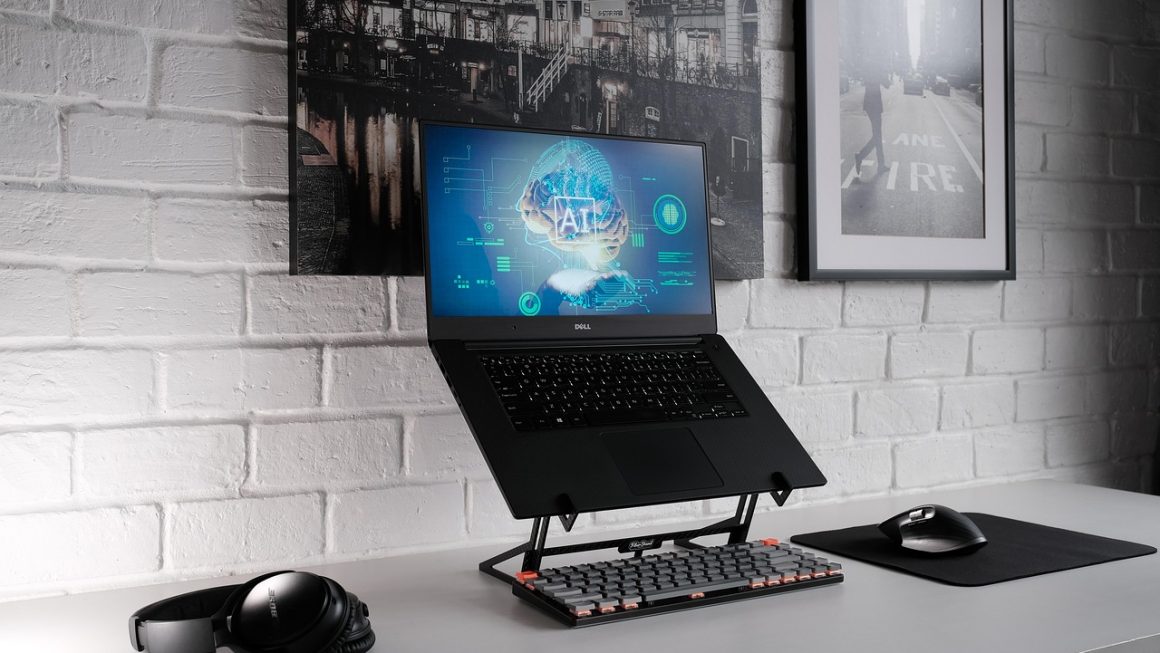Robotics has rapidly evolved from science fiction to a cornerstone of modern industry and everyday life. From automating complex manufacturing processes to assisting in delicate surgical procedures, robots are reshaping how we work, live, and interact with the world. This intricate field, blending engineering, computer science, and mathematics, continues to push the boundaries of innovation, promising a future where robots play an even more significant role.
The Building Blocks of Robotics
Robotics is a multidisciplinary field, requiring a deep understanding of various engineering and scientific principles. Understanding the core components that make up a robot is crucial for grasping the complexities and possibilities of this fascinating technology.
Mechanical Engineering: The Physical Structure
Mechanical engineering provides the foundational structure and movement capabilities of a robot.
- Kinematics: Deals with the motion of robot joints and links without considering forces or torques. Crucial for planning robot movements.
- Dynamics: Focuses on the forces and torques required to achieve specific robot motions. Important for controlling robot movements accurately and efficiently.
- Materials Science: Selecting appropriate materials is vital. Robots operating in hazardous environments might require specialized materials resistant to corrosion, high temperatures, or radiation. For example, robots used in underwater exploration need to be made of materials that can withstand immense pressure.
Electrical Engineering: Power and Control
Electrical engineering powers and controls the robot’s various components.
- Actuators: These are the muscles of the robot. Common types include electric motors, hydraulic actuators, and pneumatic actuators. The choice depends on the required force, speed, and precision. A small robot arm used in electronics assembly might use precise stepper motors, while a heavy-duty industrial robot could rely on powerful hydraulic actuators.
- Sensors: Robots use sensors to perceive their environment. This can include:
Vision sensors (cameras): For object recognition and navigation.
Force/torque sensors: To measure interaction forces with the environment.
Proximity sensors: To detect objects without physical contact.
Encoders: To measure the position and velocity of robot joints.
- Power Supply: Provides the necessary energy for the robot’s operation. This could be batteries, a wired connection to the power grid, or even solar power, depending on the application.
Computer Science: The Brains of the Operation
Computer science provides the intelligence that governs the robot’s actions.
- Artificial Intelligence (AI): Enables robots to learn, adapt, and make decisions. Machine learning algorithms, such as deep learning, are used for tasks like object recognition, path planning, and autonomous navigation.
- Programming: Robot programs are written in languages like Python, C++, and Java. These programs define the robot’s behavior, controlling its movements, sensor readings, and interactions with the environment.
- Control Systems: Ensures that the robot performs its tasks accurately and reliably. This involves feedback loops that continuously monitor the robot’s performance and make adjustments as needed.
Applications of Robotics Across Industries
Robotics has revolutionized various industries, leading to increased efficiency, productivity, and safety. The versatility of robots makes them invaluable assets in diverse fields.
Manufacturing
- Automated Assembly: Robots perform repetitive tasks with high precision and speed, increasing production rates and reducing errors. For instance, automotive manufacturing plants use robots for welding, painting, and assembly, ensuring consistent quality and minimizing human error.
- Material Handling: Robots can lift, move, and stack heavy materials, reducing the risk of injuries to human workers. In warehouses, automated guided vehicles (AGVs) and autonomous mobile robots (AMRs) navigate the facility, transporting goods efficiently.
- Quality Control: Robots equipped with vision systems can inspect products for defects, ensuring that only high-quality items reach the market. This helps to maintain product standards and customer satisfaction.
Healthcare
- Surgical Robots: Provide surgeons with enhanced precision, dexterity, and control during complex procedures. The da Vinci Surgical System is a prime example, allowing surgeons to perform minimally invasive surgeries with smaller incisions, resulting in faster recovery times for patients.
- Rehabilitation Robots: Assist patients in regaining motor skills after injuries or strokes. These robots provide repetitive exercises and track patient progress, aiding in the rehabilitation process.
- Pharmacy Automation: Robots dispense medications accurately and efficiently, reducing the risk of errors and freeing up pharmacists to focus on patient counseling.
Logistics and Warehousing
- Order Fulfillment: Robots pick and pack items from warehouse shelves, speeding up the order fulfillment process and reducing labor costs. Amazon uses robots extensively in its fulfillment centers to sort and deliver packages.
- Inventory Management: Drones equipped with cameras can scan barcodes and track inventory levels, providing real-time data and improving inventory accuracy.
- Last-Mile Delivery: Autonomous delivery robots and drones are being tested for delivering packages directly to customers’ doorsteps, reducing delivery times and costs.
Agriculture
- Precision Farming: Robots monitor crop health, apply fertilizers and pesticides, and harvest crops, optimizing yields and reducing waste. These robots use sensors and AI to make data-driven decisions, improving efficiency and sustainability.
- Automated Harvesting: Robots can harvest fruits and vegetables more efficiently than humans, reducing labor costs and minimizing damage to crops.
- Weed Control: Robots can identify and remove weeds without the need for herbicides, reducing environmental impact and promoting sustainable farming practices.
The Future of Robotics: Trends and Innovations
The field of robotics is constantly evolving, driven by technological advancements and increasing demand for automation. Several key trends are shaping the future of robotics.
Collaborative Robots (Cobots)
- Cobots are designed to work alongside humans in shared workspaces.
- They are equipped with safety features, such as force-limiting joints and sensors, to prevent injuries.
- Cobots are used in a variety of applications, including assembly, packaging, and machine tending.
- Example: Rethink Robotics’ Baxter and Sawyer robots were early examples of cobots designed for ease of use and integration into existing workflows.
Artificial Intelligence and Machine Learning
- AI and machine learning are enabling robots to become more intelligent, adaptable, and autonomous.
- Robots can learn from data, recognize patterns, and make decisions without explicit programming.
- AI-powered robots are used in applications such as autonomous driving, natural language processing, and image recognition.
- Example: Self-driving cars use AI to perceive their environment, navigate roads, and avoid obstacles.
Soft Robotics
- Soft robots are made from flexible materials, such as elastomers and fabrics.
- They can conform to their environment, grasp delicate objects, and navigate tight spaces.
- Soft robots are used in applications such as medical devices, search and rescue, and exploration.
- Example: Soft robotic grippers can handle fragile objects like fruits and vegetables without damaging them.
Human-Robot Interaction (HRI)
- HRI focuses on designing robots that can interact with humans in a natural and intuitive way.
- This includes developing robots that can understand human speech, gestures, and emotions.
- HRI is crucial for creating robots that can work alongside humans in collaborative environments.
- Example: Social robots like Pepper are designed to interact with people in retail stores, hospitals, and other public spaces.
Challenges and Ethical Considerations in Robotics
While robotics offers numerous benefits, it also presents challenges and ethical considerations that need to be addressed.
Job Displacement
- Automation through robotics can lead to job displacement in certain industries.
- It is important to provide retraining and education opportunities for workers to adapt to the changing job market.
- Governments and businesses need to collaborate to create new jobs and industries that leverage the potential of robotics.
Safety and Security
- Robots can pose safety risks if they are not properly designed, programmed, and maintained.
- Security concerns arise as robots become more connected and autonomous, making them vulnerable to hacking and misuse.
- Robust safety standards and security protocols are needed to mitigate these risks.
Bias and Fairness
- AI algorithms used in robotics can perpetuate biases if they are trained on biased data.
- This can lead to unfair or discriminatory outcomes, particularly in applications such as facial recognition and criminal justice.
- It is important to ensure that AI algorithms are trained on diverse and representative datasets to mitigate bias.
Autonomy and Control
- As robots become more autonomous, questions arise about who is responsible for their actions.
- Clear guidelines and regulations are needed to govern the use of autonomous robots, particularly in situations where human lives are at stake.
- Ethical frameworks are needed to ensure that robots are used in a responsible and beneficial manner.
Conclusion
Robotics is a transformative technology that is reshaping industries and redefining possibilities. From manufacturing and healthcare to logistics and agriculture, robots are increasing efficiency, improving safety, and driving innovation. As the field continues to evolve, it is crucial to address the challenges and ethical considerations associated with robotics, ensuring that these powerful tools are used in a responsible and beneficial manner for all of humanity. Embracing lifelong learning and adaptation to new technologies will be key for individuals and organizations to thrive in a world increasingly influenced by robotics.




